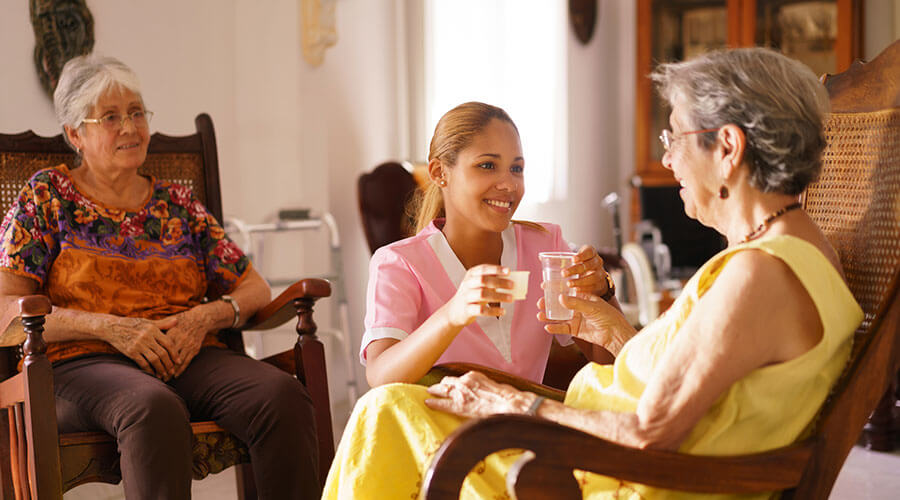If your loved one recently became a hospice patient, you might wonder how you can be supportive. Should you bring books, games or other activities? Is it ok to take them food or have a pet come along for the visit?
Mary Wohl, a social worker with Good Samaritan Society – Home Health & Hospice in Nisswa, Minnesota, offers several tips.
1. Be proactive
“Sometimes patients don’t know what they need, so rather than asking if you can make them dinner or throw in a load of laundry, go in knowing you can do those things and that they will greatly appreciate it. Be prepared emotionally to just listen and know you don’t have to ‘fix’ things.”
2. Stay in contact
“With permission from the patient or their caregiver, family or friends can talk with one of the hospice team members before they visit to find out what’s been happening and how they can support the patient.”
3. Know their favorite food
“Our society tends to find comfort in food during difficult situations, and people like to bring food to share. Before your visit, ask what your loved one can and can’t eat and whether food needs to be pureed or thickened.”
4. Determine if a pet can visit
“There are rules and regulations about bringing pets into assisted living and skilled nursing facilities; pets need to be certified to visit facilities. If you’re going into someone’s home, find out if they would appreciate a visit from a pet. It’s important to remember not everyone is a ‘pet person.’”
5. Plan engaging activities
“Providing comfort is a big part of supporting a loved one in hospice. You could bring in lotion for hand and foot massages, bring in aroma therapy items or candles; or play their favorite music. Maybe they want to prepare birthday cards or letters for family members and no longer have the strength to write. You can assist them in writing letters or thank you cards for family members or friends.”
6. Soak up the sun
“Throw a blanket or coat on your loved one and take them outside to get some sunshine on their face.”
7. Stimulate their mind
“Know what your loved one enjoys. Flowers, plants, puzzles, adult coloring books and finger paint are good to bring. As a patient’s health declines, they may have difficulty reading and might enjoy having their favorite novel read to them. You could read a chapter a week or bring a newspaper to catch them up on the latest news.”
8. Focus on encouragement
“Talk about the upcoming season and what types of activities the patient did in the past during that time of year. It is refreshing for patients to do some life review, talking about raising their children, where they grew up, their marriage and church involvement. Bring up some of those topics and let them lead the conversation”
Family members can also check with the hospice team to see if special funds are available to help fulfill patients’ final wishes.
“We have a client dreams fund. We did a spa day for a mother and daughter. Our staff took a patient to the casino for two hours and he had an awesome time. We had the opportunity to assist with getting a sibling to visit from a distance away – they had not seen each other in many years” says Mary. “If the patient has a dream or a bucket list item, talk to your hospice social worker to see if there are funds that can be used to fulfill their wishes.”
The hospice team is always available for patients and their family members.
“I can provide support to people where they’re at,” Mary states. “And not just physically, but emotionally, cognitively and spiritually. I feel blessed to be able to walk that journey with them.”




